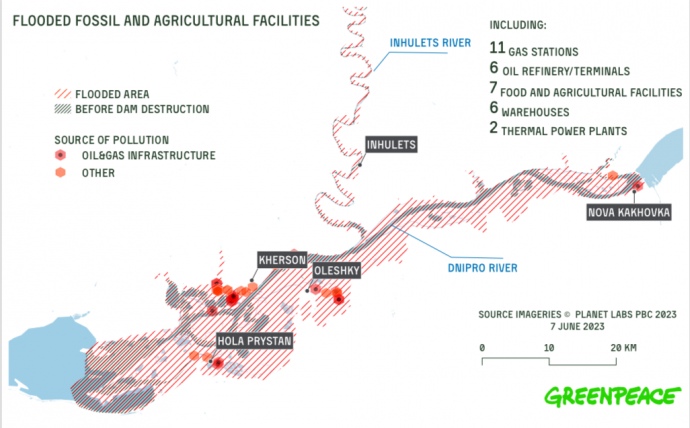At least 32 facilities with fuel and lubricants were flooded in Kherson Oblast – Greenpeace
The destruction of the Kakhovka Hydroelectric Power Plant (HPP) caused the flooding of not only settlements but also fuel stations, warehouses, and an oil refinery. Source: data from the Greenpeace organisation Details: Based on satellite data, it was determined that oil refineries, gas stations, thermal power plants, and various warehouses--a total of 32 facilities--were flooded.
Preliminary reports indicate that about 150 tonnes of engine oil leaked into the water in the first days of the disaster.
Advertisement: Source:Greenpeace
Source:Greenpeace
According to experts, even small amounts of chemicals are enough to contaminate soil and water bodies. As a result, access to clean water will be difficult for many people. Chemicals are highly likely to pollute the Dnipro River, the Black Sea and coastal areas.
Most living organisms are also likely to die.
We have launched English Twitter! Follow us!
"Where the water is currently receding, large-scale pollution by products of the oil refining industry and industrial and household chemicals should be expected. Heavy metal pollution should also be investigated.
Soils and water bodies can be unsuitable for food production or as a source of drinking water for many years if they are not monitored and, if necessary, not properly restored," comments German chemist Manfred Santen. Background: The consequences of blowing up the Kakhovka HPP for ecology were felt almost immediately. A few days after the tragedy, garbage and household appliances started washing ashore on the Black Sea coast.
Journalists fight on their own frontline. Support Ukrainska Pravda or become our patron!